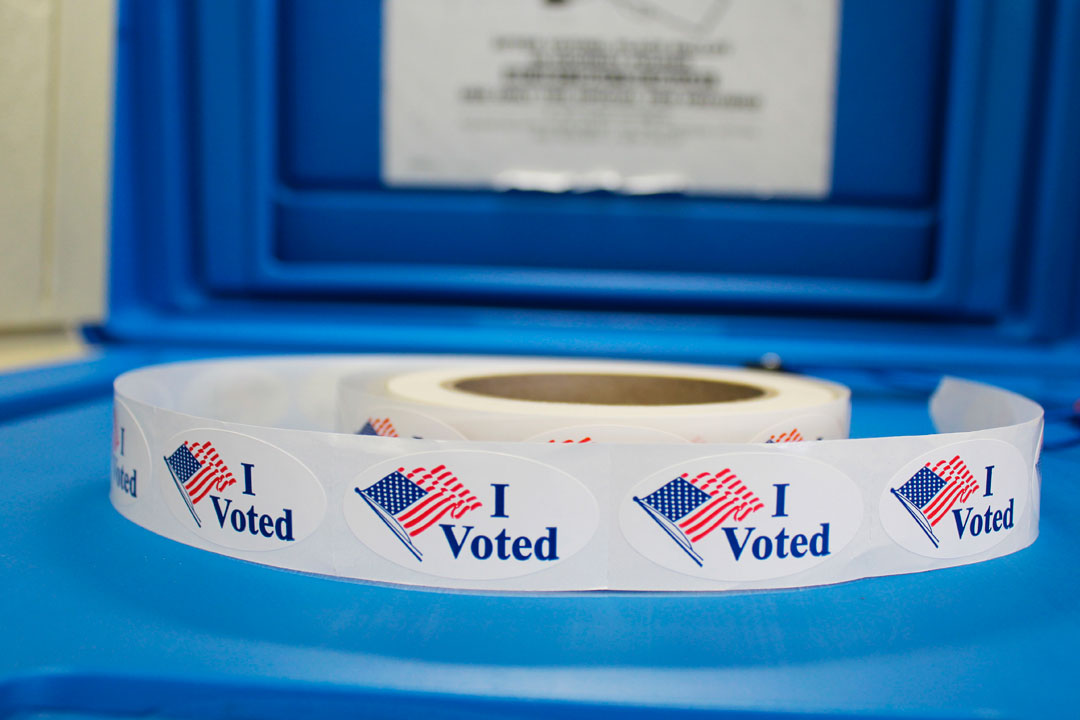A version of this article originally appeared on GW Today.
A variety of high-visibility and sometimes controversial national political issues over the past few months have yielded little change in voters’ views of most notable political figures, parties and issues, according to a new edition of the George Washington University Politics Poll.
While opinions haven’t changed, according to the poll, voters remain highly engaged in the election.
The poll showed that as the election drew closer, more registered voters talked with people about reasons to vote for parties or candidates (42 percent compared with 38 percent in the poll’s last edition in early August). One-third (33 percent) of voters reported being contacted by one of the political parties, an increase of 7 percentage points from the summer.
The GW poll data continued to indicate a large voter response for the midterm elections. More than four out of five (82 percent) registered voters said they definitely will vote in the midterm elections. Another 11 percent said they probably would. Although both Republicans and Democrats in the poll are equally likely to report they plan to vote, Democrats reported more engagement in each wave of the poll leading up to the election. Democrats are more likely to report having gone to a meeting or rally, working for a party or candidate, using social media to share an opinion, giving money and displaying a campaign button, sticker or sign.
Despite increased attention and outreach, voter opinions on most issues, including tax policy, health care and gun control, stayed largely the same as previous editions of the GW poll in the spring and summer.
“I think most people know that we live in a world of strong partisanship, which is increasingly evident in congressional voting. But how much partisanship helped stabilize people’s preferences in this election season still surprised me,” GW Politics Poll co-director John Sides said in a companion article on The Washington Post’s “Monkey Cage” blog.
There was a slight shift in the major political parties’ strengths in a generic match-up: 48 percent of voters polled in October said they’d vote for the Democratic Party if the election were held then, an increase of 3 points from the summer edition of the poll. The percentage of respondents favoring the Republican Party in a generic matchup increased to 40 percent from 38. This movement seemed to come from voters making up their minds as the election draws nearer. The percentage of voters unsure of their preference decreased from 12 to 7.
Judiciary Concerns
For the first time, the GW Politics Poll asked registered voters their opinions of Supreme Court Associate Justice Brett Kavanaugh. More people viewed him unfavorably (50 percent) than favorably (40 percent). Out of the half of respondents with a negative opinion of the justice, most (42 percent of all respondents) said their opinion was very unfavorable. Only 27 percent viewed him very favorably. Voters were split on whether Kavanaugh should be been confirmed (43 percent) or not (47 percent).
The latest edition of the GW poll, taken a few weeks after Kavanaugh’s confirmation to the court, also showed voters becoming a bit more pessimistic about the future of landmark Supreme Court ruling in Roe v. Wade. A third (33 percent) of those polled thought it was likely to be overturned, up two points from the summer edition of the poll. The percentage of voters who found it unlikely the ruling would be overturned decreased from 53 to 49.
Issues Worth Watching
In another new question for the GW poll, a majority of registered voters (58 percent) expressed support for legalizing marijuana. Only 29 percent said use of the drug should be illegal.
On the economy, the percentage of people who thought the economy is getting better stayed the same (at 39), but there was a decrease in those who thought it was getting worse, from 24 percent over the summer to 19 percent in October.
President Donald Trump’s approval rating stayed mostly the same, but some people seemed to be losing patience with him. His disapproval rating remained at 53 percent in October, the same as the summer edition of the poll, but his approval rating dropped to 43 percent from 45. That corresponded with 2 percentage points fewer people unsure of how they felt.
For additional data including individual politicians’ approval ratings and voters’ thoughts on presidential pardons, the special counsel investigation and more, visit the GW Politics Poll website.
About the GW Politics Poll
The GW Politics Poll is managed jointly by GW's School of Media and Public Affairs, Graduate School of Political Management and Department of Political Science. YouGov, a respected leader in online polling, conducted the academic, nonpartisan research poll for GW. This poll was conducted Oct. 17-25 with a sample of 2,321 registered voters (reintroduced from 3,150 who participated in the May 2018 poll) and a margin of error of ±2 percentage points. This is the third of four surveys focused on the 2018 midterm elections. The GW Politics Poll will interview the same respondents after the election to track public views over the course of the campaign.


